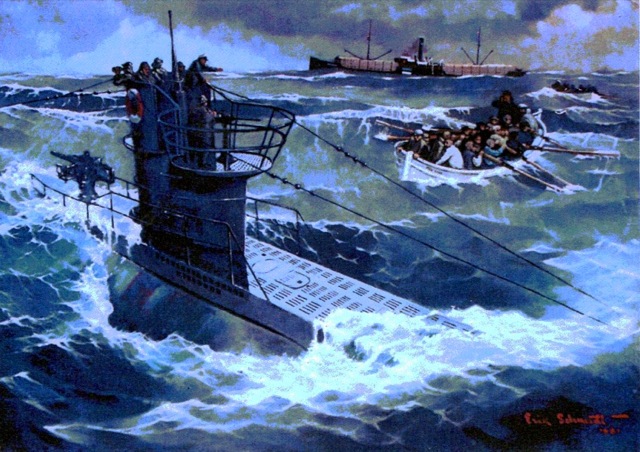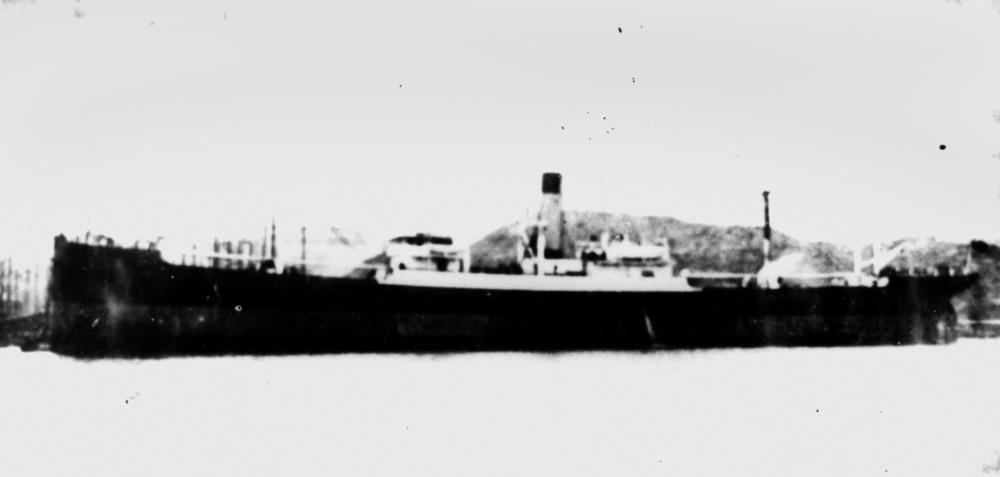German Submarine U-99 (1940) on:
[Wikipedia]
[Google]
[Amazon]
German submarine ''U-99'' was a Type VIIB U-boat of Nazi Germany's ''
 † Convoy HX 52, ‡ Convoy HX 53, * sunk by German bombing, 15 July 1940
† Convoy HX 52, ‡ Convoy HX 53, * sunk by German bombing, 15 July 1940


uboataces.com webpage with insignia for ''U-99''
{{DEFAULTSORT:U0099 1940 ships German Type VIIB submarines Ships built in Kiel U-boats commissioned in 1940 U-boats scuttled in 1941 U-boats sunk by British warships World War II shipwrecks in the Atlantic Ocean World War II submarines of Germany Maritime incidents in March 1941
Kriegsmarine
The (, ) was the navy of Germany from 1935 to 1945. It superseded the Imperial German Navy of the German Empire (1871–1918) and the inter-war (1919–1935) of the Weimar Republic. The was one of three official branches, along with the a ...
'' during World War II. She was laid down on 31 March 1939 at the Friedrich Krupp Germaniawerft in Kiel as yard number 593. She was launched on 12 March 1940 under the command of Korvettenkapitän Otto Kretschmer
Otto Kretschmer (1 May 1912 – 5 August 1998) was a German naval officer and submariner in World War II and the Cold War.
From September 1939 until his capture in March 1941 he sank 44 ships, including one warship, a total of 274,333 tons. For th ...
and was assigned to the 7th U-boat Flotilla based in Kiel and later in St Nazaire
Saint-Nazaire (; ; Gallo: ''Saint-Nazère/Saint-Nazaer'') is a commune in the Loire-Atlantique department in western France, in traditional Brittany.
The town has a major harbour on the right bank of the Loire estuary, near the Atlantic Ocean. T ...
.
''U-99'' was one of the most successful German U-boats in the war, sinking 38 ships for a total tonnage of of Allied shipping in eight patrols. She damaged five more ships and took one vessel as a prize.
Design
German Type VIIB submarines
German(s) may refer to:
* Germany (of or related to)
**Germania (historical use)
* Germans, citizens of Germany, people of German ancestry, or native speakers of the German language
** For citizens of Germany, see also German nationality law
**Ger ...
were preceded by the shorter Type VIIA submarines. ''U-99'' had a displacement of when at the surface and while submerged. She had a total length of , a pressure hull length of , a beam of , a height of , and a draught of . The submarine was powered by two Germaniawerft F46 four-stroke, six-cylinder supercharged
In an internal combustion engine, a supercharger compresses the intake gas, forcing more air into the engine in order to produce more power for a given displacement.
The current categorisation is that a supercharger is a form of forced induct ...
diesel engines producing a total of for use while surfaced, two BBC GG UB 720/8 double-acting electric motors producing a total of for use while submerged. She had two shafts and two propeller
A propeller (colloquially often called a screw if on a ship or an airscrew if on an aircraft) is a device with a rotating hub and radiating blades that are set at a pitch to form a helical spiral which, when rotated, exerts linear thrust upon ...
s. The boat was capable of operating at depths of up to .
The submarine had a maximum surface speed of and a maximum submerged speed of . When submerged, the boat could operate for at ; when surfaced, she could travel at . ''U-99'' was fitted with five torpedo tubes (four fitted at the bow and one at the stern), fourteen torpedoes, one SK C/35 naval gun, 220 rounds, and one anti-aircraft gun
Anti-aircraft warfare, counter-air or air defence forces is the battlespace response to aerial warfare, defined by NATO as "all measures designed to nullify or reduce the effectiveness of hostile air action".AAP-6 It includes surface based, ...
The boat had a complement of between forty-four and sixty.
Service history
From April to June 1940, the crew of ''U-99'' were under training, based at Kiel and St. Nazaire.First patrol
On 18 June, ''U-99'' departed Kiel for operations in the North Sea west of Norway. An Arado Ar-196 seaplane from the German battlecruiser attacked her, having mistaken her for a British submarine. Two days later, ''U-99'' was attacked by two aircraft; minor damage was inflicted. She returned to Kiel on 25 June.Second patrol
''U-99'' departed Wilhelmshaven on 27 June to patrol southwest of Ireland. On 29 June, she was attacked by British aircraft. A crash dive was carried out with the result that the boat hit the seabed, causing some damage which was able to be repaired. On this patrol ''U-99'' sank six ships and captured one, the Estonian cargo steamship ''Merisaar'', carrying a load of timber from New Orleans, to Cork, Ireland.) An attack on the was called off on 7 July, when the defensively equipped merchant ship returned fire. On 8 July, over 100depth charge
A depth charge is an anti-submarine warfare (ASW) weapon. It is intended to destroy a submarine by being dropped into the water nearby and detonating, subjecting the target to a powerful and destructive Shock factor, hydraulic shock. Most depth ...
s were dropped by the escorts of Convoy HX 53, but ''U-99'' escaped undamaged. The patrol ended on 21 July.
 † Convoy HX 52, ‡ Convoy HX 53, * sunk by German bombing, 15 July 1940
† Convoy HX 52, ‡ Convoy HX 53, * sunk by German bombing, 15 July 1940
Third patrol
On 25 July, ''U-99'' departed Lorient for the North Atlantic. Four ships were sunk and three others damaged. On the 31st, the escorts of Convoy OB 191 dropped 20 depth charges on the boat without effect. Later that evening, aflying boat
A flying boat is a type of fixed-winged seaplane with a hull, allowing it to land on water. It differs from a floatplane in that a flying boat's fuselage is purpose-designed for floatation and contains a hull, while floatplanes rely on fusela ...
also attacked her, again without causing any damage. The patrol ended on 5 August.
† Convoy OB 191, ‡ Damaged
Fourth patrol
''U-99'' departed Lorient on 4 September for the North Atlantic; seven ships were sunk. The patrol ended on the 25th. ''U-99'' was slightly damaged in anair raid
Air raid may refer to:
Attacks
* Airstrike
* Strategic bombing
Other uses
* ''Air Raid'' (album), by the improvisational collective Air
* Air Raid ''(Transformers)'', the name of three characters in the Transformers universes
* ''Air Raid'' ...
on Lorient on 27 September.
† Convoy SC 3, ‡ Convoy HX 71, * Convoy HX 72
Fifth patrol
On 13 October, ''U-99'' departed Lorient to patrol the North West Approaches. Six ships from Convoy SC 7 were sunk and another was damaged. The patrol ended on 22 October.

Sixth patrol
''U-99'' departed Lorient for the North West Approaches on 30 October 1940; four ships were sunk. The patrol ended on 8 November. † Convoy HX 83Seventh patrol
On 27 November, ''U-99'' departed Lorient for the North Atlantic. Four ships were sunk. The patrol ended on 12 December. † Convoy HX 90, ‡ Convoy OB 252Eighth patrol
''U-99'' departed Lorient on 22 February 1941 to patrol in the North Atlantic; eight ships were sunk. ''U-99'' was attacked herself, with severe damage inflicted. Kretschmer surrendered and scuttled the submarine with the loss of three lives. †Convoy OB 293
OB 293 was a North Atlantic convoy which ran during the battle of the Atlantic in World War II.
It was notable for seeing the loss to the Kriegsmarine (KM) of , with her commander KL Günther Prien, the person responsible for the sinking of ...
, ‡ Convoy HX 112
HX 112 was a North Atlantic convoy of the HX series which ran during the battle of the Atlantic in the Second World War. It saw the loss of U-boats commanded by two of the Kriegsmarine's most celebrated commanders and propaganda heroes: under ...
Fate
On 17 March 1941, ''U-99'' had just fired the last of her torpedoes and sunk ''Korshamn'' when the Watch Officer spotted adestroyer
In naval terminology, a destroyer is a fast, manoeuvrable, long-endurance warship intended to escort
larger vessels in a fleet, convoy or battle group and defend them against powerful short range attackers. They were originally developed in ...
, southeast of Iceland in approximate position . He immediately ordered a dive, contrary to Kretschmer's standing orders, but once the boat was under it was quickly fixed on ASDIC and attacked by and . ''U-99'' was driven deep by the attack but was nonetheless severely damaged. Kretschmer had no choice but to surface; immediately a barrage of fire greeted the boat. Kretschmer sent a message to Donald Macintyre, ''Walker''s captain, "CAPTAIN TO CAPTAIN. I AM SUNKING icPLEASE RESCUE MY CREW." He then ordered that the boat should be scuttled. Forty crew, including Kretschmer, were rescued to become POWs. Three crewmen – the engineering-officer and two ratings – lost their lives. The engineering officer re-entered the sinking U-boat and perished while opening the galley hatch, to hasten the boat's sinking and prevent the British from boarding it.
Macintyre took Kretschmer's binoculars as a souvenir. But in 1955, he gave them back to Kretschmer.
Wolfpack operations
''U-99'' operated with the following Wolfpacks during her career: *Wolfpack 1 (20 – 22 September 1940) *Wolfpack 2 (17 – 19 October 1940)Summary of raiding history
See also
*List of successful U-boats
List of successful U-boats contains lists of the most successful German U-boats in the two World Wars based on total tonnage.
World War I
This list contains the 5 most successful German U-boats during the First World War based on total tonna ...
* Operation Kiebitz
References
Notes
Citations
Bibliography
* * * * * * *External links
*uboataces.com webpage with insignia for ''U-99''
{{DEFAULTSORT:U0099 1940 ships German Type VIIB submarines Ships built in Kiel U-boats commissioned in 1940 U-boats scuttled in 1941 U-boats sunk by British warships World War II shipwrecks in the Atlantic Ocean World War II submarines of Germany Maritime incidents in March 1941